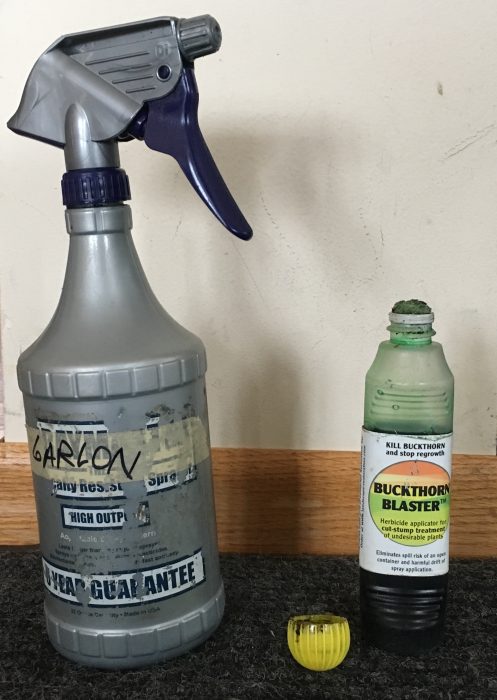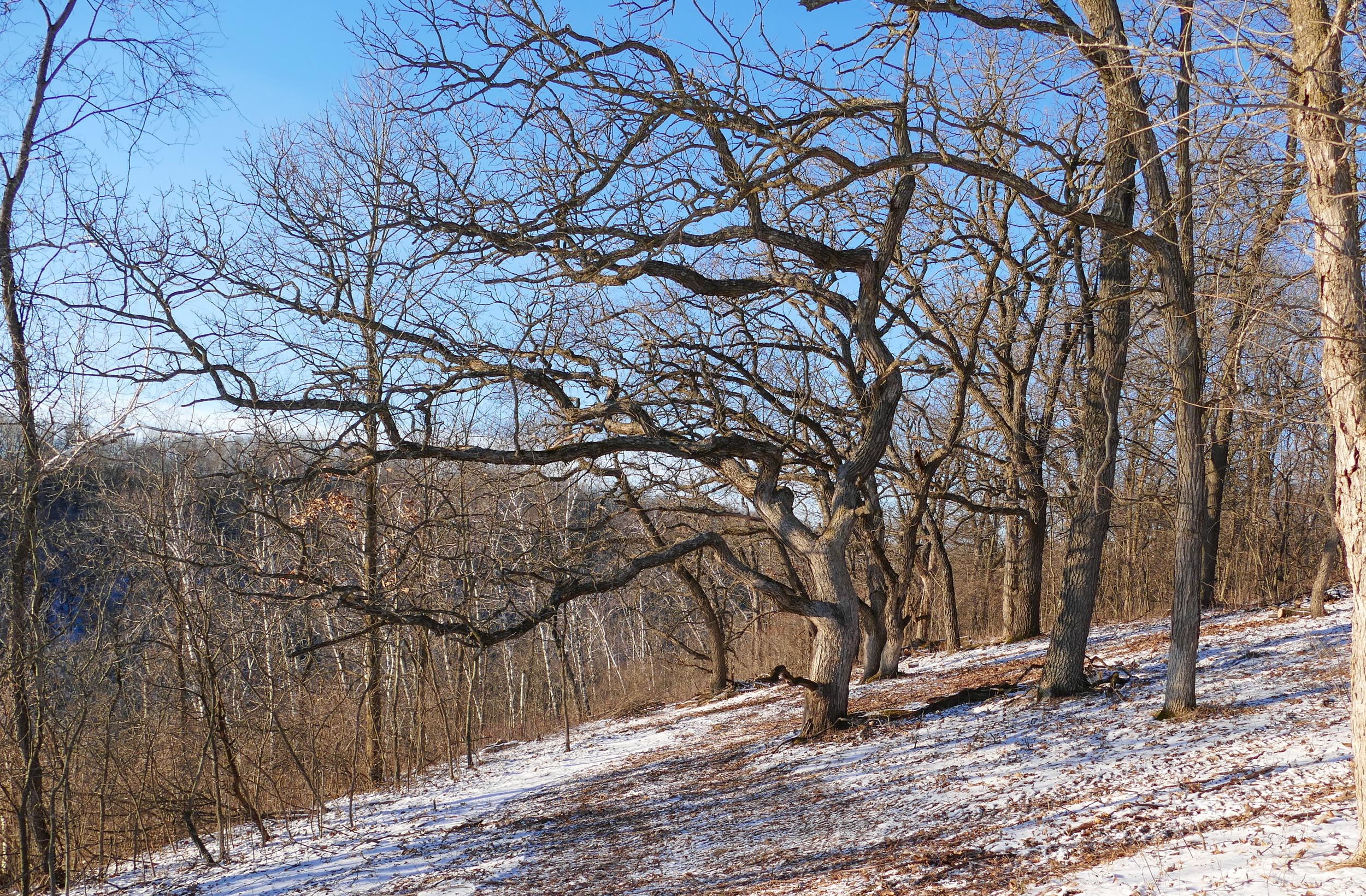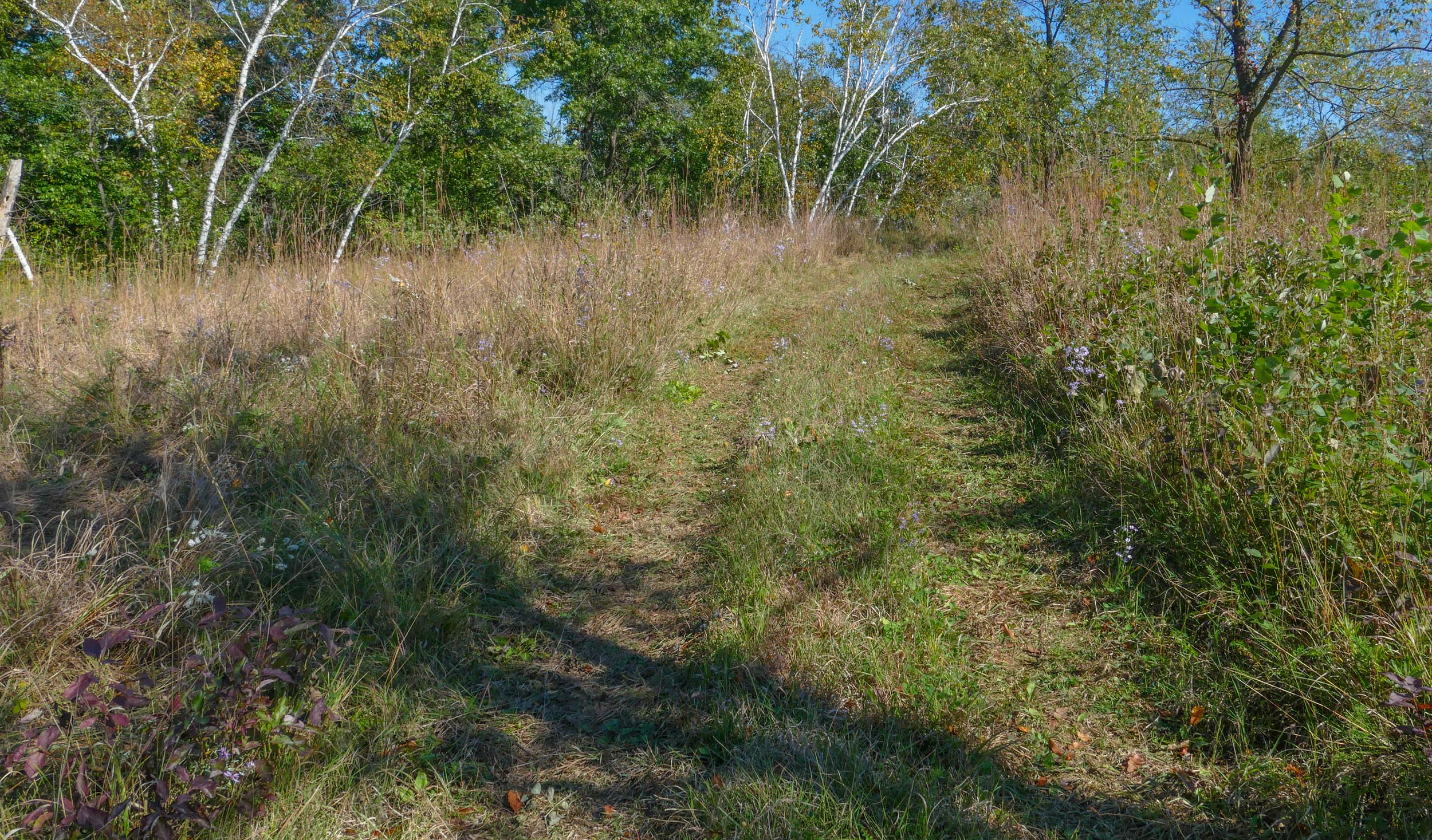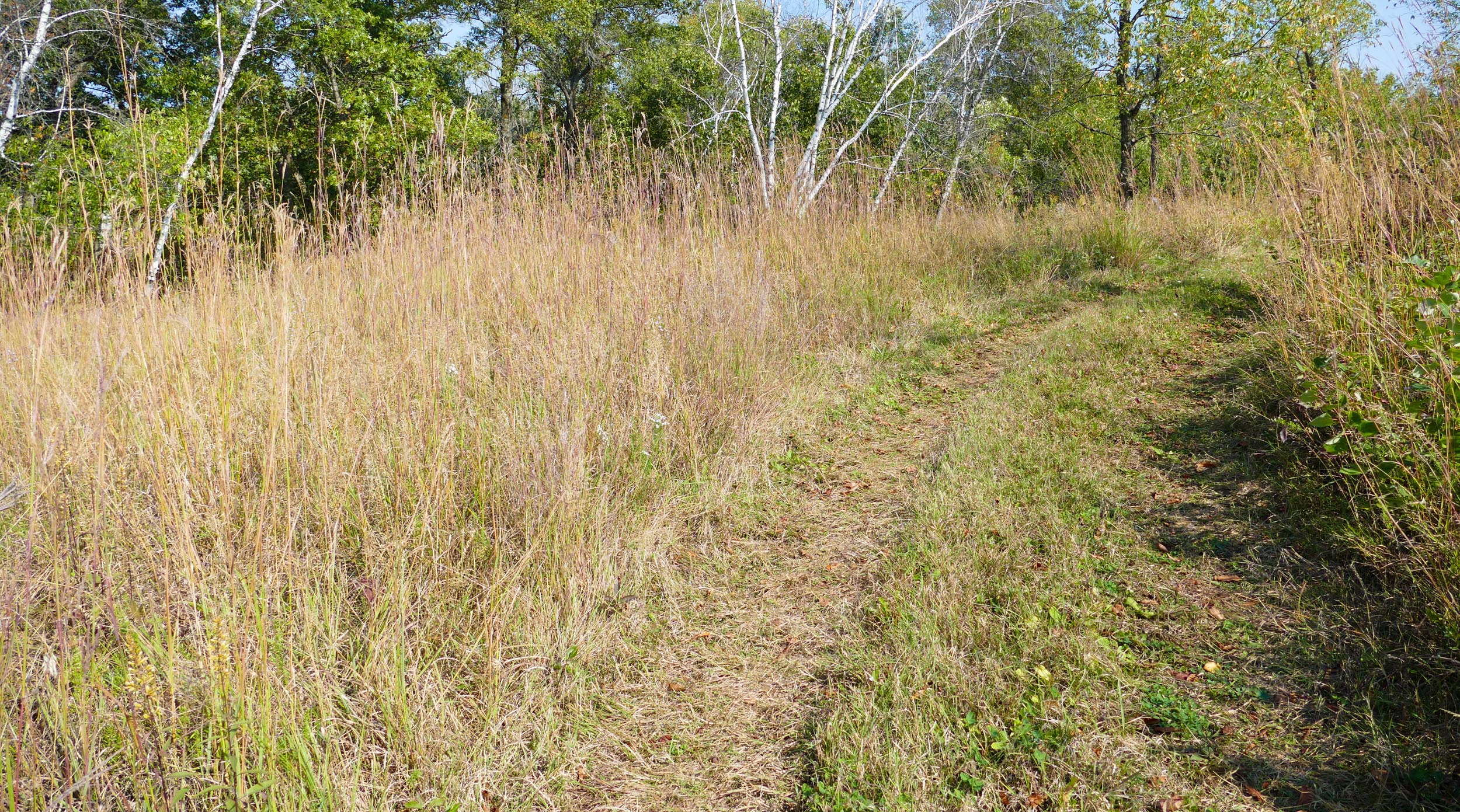This is my favorite kind of restoration work. It’s slower than mowing, but very effective. It’s the best way I’ve found to clear slopes that are too rocky or too steep for mowing, or to control brush on flatter areas.
When woody stems or tree trunks are cut, the roots are stimulated to resprout, often sending up more stems than were there originally. To solve this problem, we cut each tree or woody stem – trees and larger woody stems with chain saws, small stems with hand clippers – and immediately treat the cut stumps with herbicide.
Herbicides:
I use either glyphosate (Roundup) or Garlon 4.
Glyphosate: 25% glyphosate mixed in water. I use it either in a 1 quart squirt bottle, or in a Buckthorn Blaster. A Buckthorn Blaster is useful when I’m cutting many small stems like raspberries. It holds a small amount of herbicide, and has a sponge top. The herbicide can’t spill, and it’s dispensed by turning the bottle upside down and touching the sponge to the stem. The blaster makes it easy to direct the herbicide exactly where I want it, without any damage to surrounding plants. The sponges wear out frequently – I replace them every few days. The squirt bottle works well for larger stems. I touch the tip to the stump, and squeeze the trigger gently to be sure the poison stays on the cut stump and doesn’t touch any nearby plants.
Garlon: 20% Garlon 4 mixed in Blue Bark Oil. I put it in a sturdy 1 quart squirt bottle. (The bark oil dissolves some plastics, so some of the cheaper squirt bottles don’t work. It also dissolves Buckthorn Blasters.) I use Garlon, not glyphosate, in winter, because it doesn’t freeze.
Both glyphosate and Garlon work on most woody stems. Glyphosate seems to work better on honeysuckle.
Cutting Tools:
We do the cutting with an electric chainsaw or a hand clipper – depending on the size of the stem. Mike cuts the larger trees with a chainsaw, I concentrate on shrubs and smaller brush, and use both a small chainsaw and a hand clippers. I do much of my work on my hands and knees – it’s easier to reach the stems, and easier on my back. Also, some of the slopes are very steep, and it’s easier to keep my balance if I’m on my knees.
This is my favorite hand clipper. It stays very sharp for a long time, and when it does get dull, the blade is replaceable.
Electric chainsaws have been a huge help in our restoration work. Unlike gasoline chainsaws, they start and stop easily (with the touch of a button). That means we can easily stop between cuts, or when we’re thinking about what to cut next. Electric chainsaws are also quiet and lightweight compared to gas chainsaws. We each have one. Mike’s saw is a bit larger – he cuts bigger trees. I cut smaller trees and shrubs, and walk up and down steep hills with it more often, so I appreciate having one that’s smaller and lighter.
We treat the cut stems immediately with herbicide. We’ve discovered that if we cut a lot of stems first, and then try to go back to treat them, we miss some. So Mike treats each tree stump as he cuts it, and I treat small groups of stems before I move on.
If the brush is light and small, I drop the cut pieces on the ground as I go. If it’s thicker, or if it’s logs, we pile it and use the tractor to carry the piles to a larger pile in a place that’s out of the way. We used to burn our brush piles, but that turns into another big project and leaves big fire scars where nothing grows for several years. Now we just make big piles back in the woods and let them slowly decompose. In the meantime, they provide habitat for small animals and birds and insects.
Here’s Mike and the tractor carrying a giant bucket load of brush back to a large pile.
Here’s one of our large piles.
This was an overgrown savanna area that we cleared using this method. This first photo is before we’d done any work.
After we’d cut most of the bushes, but not hauled them away.
This is after cleaning up all our piles, and hauling them away.
And this is the same place the next summer – there are still some weeds in the understory, but no returning brush.
This is an example of a steep prairie hillside that I did by hand, throwing the cut brush onto a pile at the bottom of the hill. This first photo is from 2008, when I first started. It’s a west-facing hillside. The understory plants were all prairie, but there was a forest of birches above them that I’d girdled, so they were dying.
This is from 2011, after much cutting and treating of stumps.
Woody stems that don’t work as well with this method are from plants that are clonal: Sumac, aspen, and Gray Dogwood. But even these species will respond if I cut and treat many stems in the clone. Sumac and aspen recover slowly, gradually sending up more shoots from their huge root systems. Gray Dogwood sends up smaller shoots from each treated stem.
This shows part of a remnant prairie where there were hundreds of aspen and dogwood shoots. I’ve cut and treated the ones on the left, but not to the right of the path.
A year later, the area on the left is still relatively free of aspen and dogwood.













